Where you can retrofit blind spot information systems (BSIS) on heavy goods vehicles (HGVs)
Published 29 July 2025
Applies to England, Scotland and Wales
Deciding where to install a BSIS device
Blind spot information systems (BSIS) detect vulnerable road users and alert the driver to their presence or a possible collision.
They can be installed by the manufacturer or retrofitted at a later date.
If you’re retrofitting a BSIS device to an HGV with sideguards, you must install it in the right place. The vehicle will fail its MOT if the BSIS is in the wrong place.
Use the diagrams along with the manufacturer’s instructions to decide where to install the device.
You can find the dimensions of protected areas in section 9 of the HGV inspection manual.
This guidance does not apply to manufacturer installed systems that hold a valid type approval to UN ECE Regulation 151. Systems already installed by the manufacturer will meet MOT requirements.
Rigid HGVs where the body forms the sideguard area
You must not install the device in the area where the body forms the sideguard (this is shown as red on the diagram).
You can install the device anywhere else on the body of your vehicle (this is shown as green on the diagram).
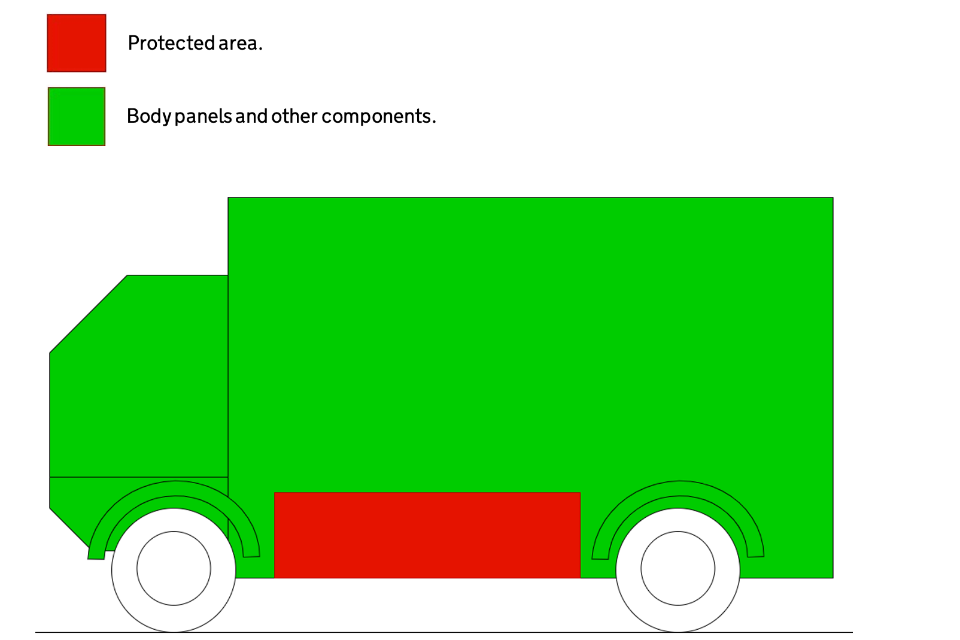
The protected area is covered by a side guard area made from the vehicle's body.
Rigid HGVs where rails make up the sideguard
You must not install the device on or over any part of the rail’s outward or forward facing surfaces (this is shown as red on both diagrams).
You can install it in the areas shown as solid green and cross hatched green in the diagrams. The best positions are:
- in the area between the front wheel and the sideguard
- within the gap between the two rails (make sure the device does not protrude too far past the surface of the rails)

Diagram 1: A 2-axle vehicle where the protected area is covered by two horizontal rails. Sometimes there is only one rail.
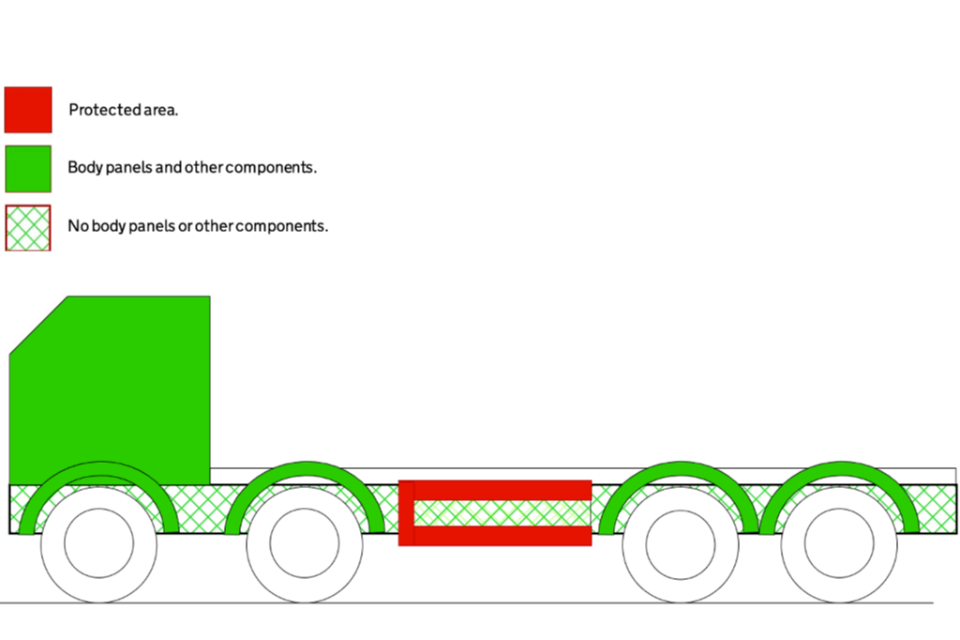
Diagram 2: A 4-axle vehicle where the protected area is covered by two horizontal rails. Sometimes there is only one rail.
Examples of installations that would pass at MOT
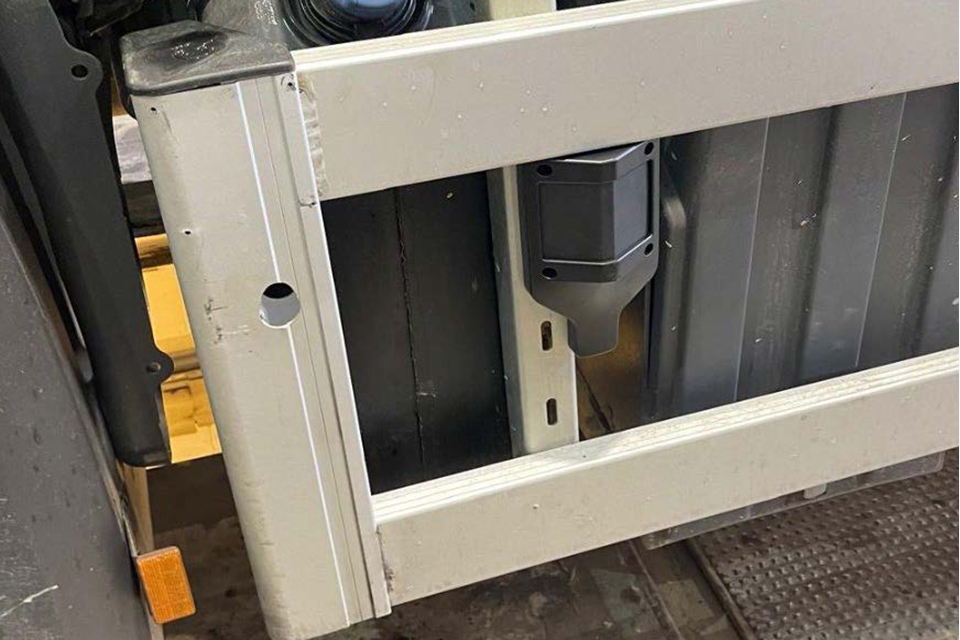
This would be acceptable because the device is installed between the rails.
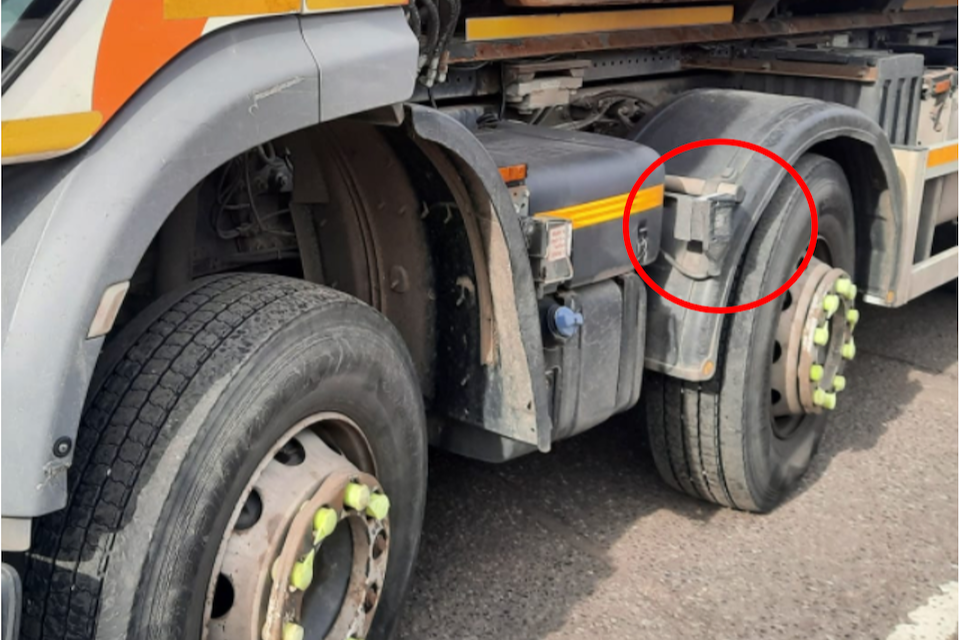
This would be acceptable because the device is fitted between axles 1 and 2 on a 4-axle vehicle where a sideguard is not required.
Example of an installation that would fail at MOT
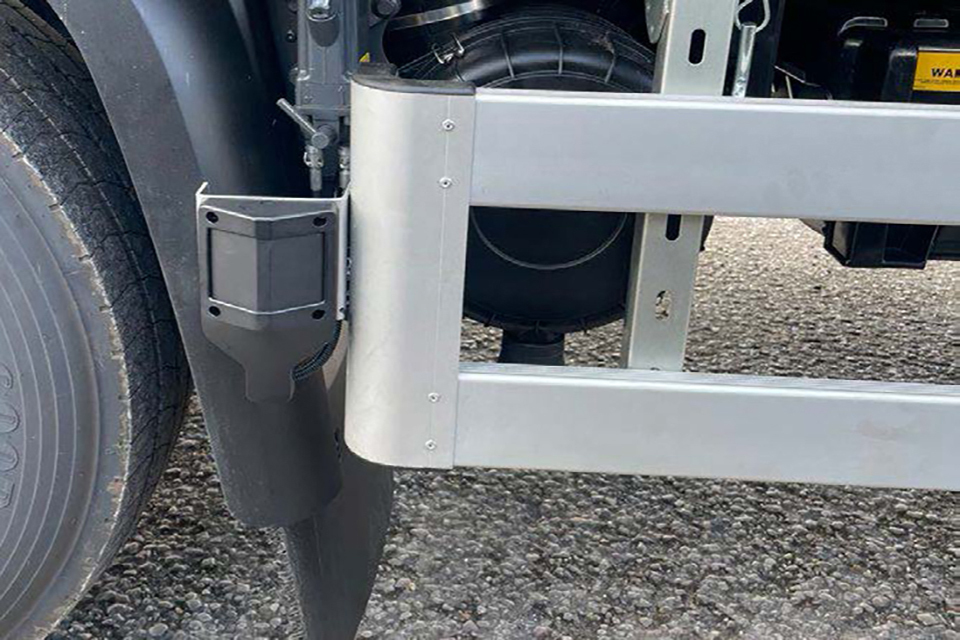
This would not be acceptable because the device is installed to the front of the sideguard.
Tractor (artic) units
Tractor units do not need sideguards so the devices can be installed anywhere on the vehicle. This is shown as solid green and cross hatched green on the diagram.

Example of an installation that would pass at MOT
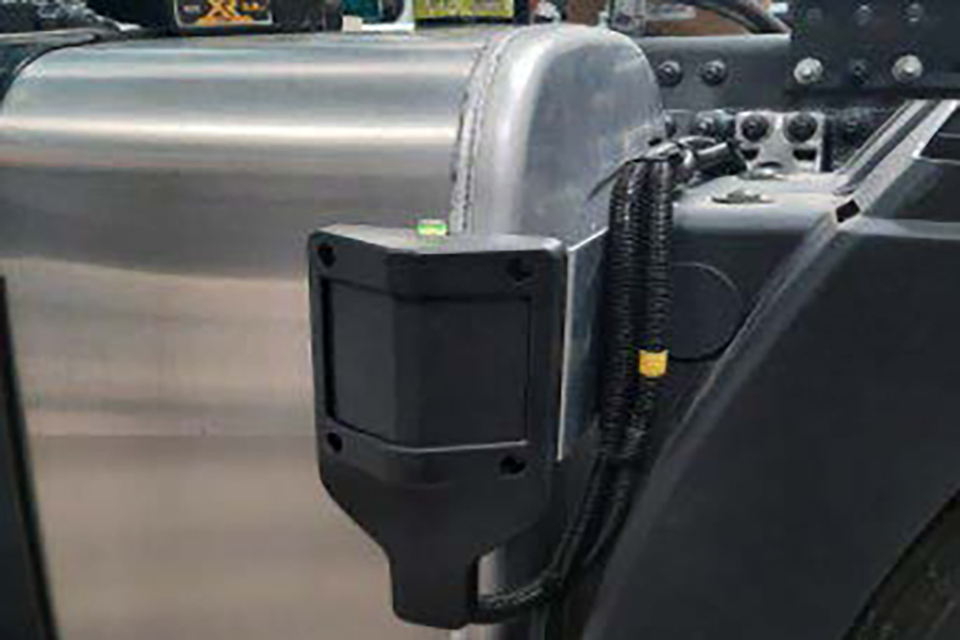
This would be acceptable because it’s installed to a tractor unit that does not need sideguards.
HGVs with additional protection panels added to sideguards
You must not install the device where the rails are behind the panel (this is shown by the red dots on the diagram).
You can install the device:
- on the areas shown as green on the diagram
- where the protection panel covers the gaps between the rails (this is shown as solid yellow on the diagram).
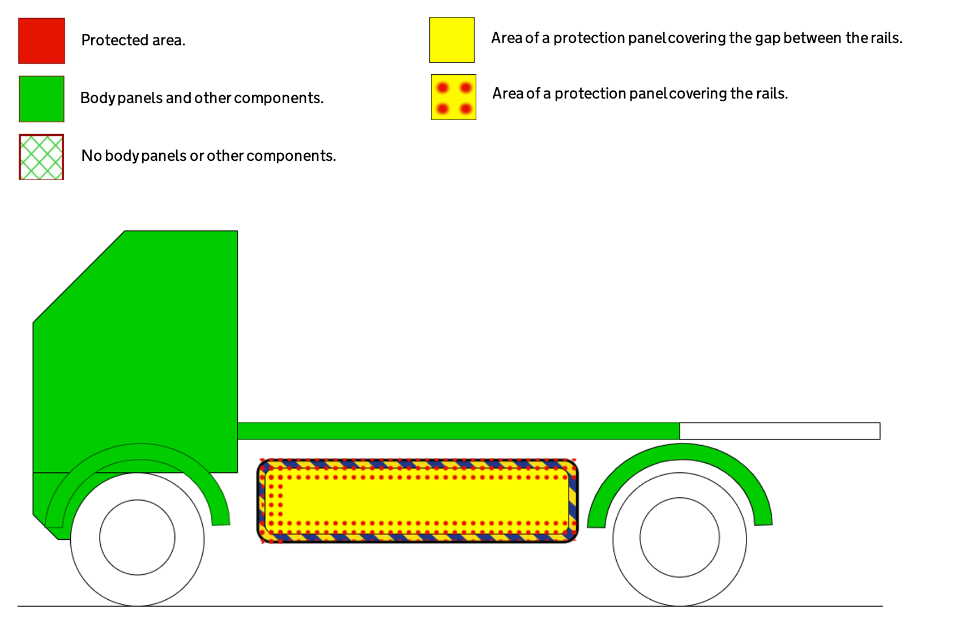
A protection panel is fitted to the side guard rails. This covers the rails and the gap between the rails.
Example of an installation that would pass at MOT
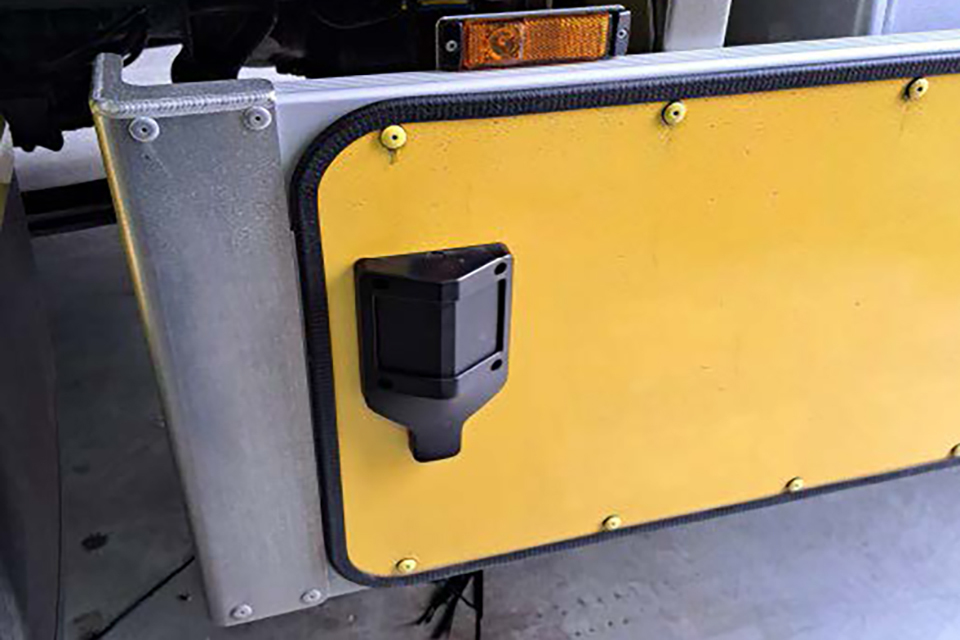
This would be acceptable because the device is fitted to the panel where there’s a gap between the rails behind it.
Example of an installation that could fail at MOT
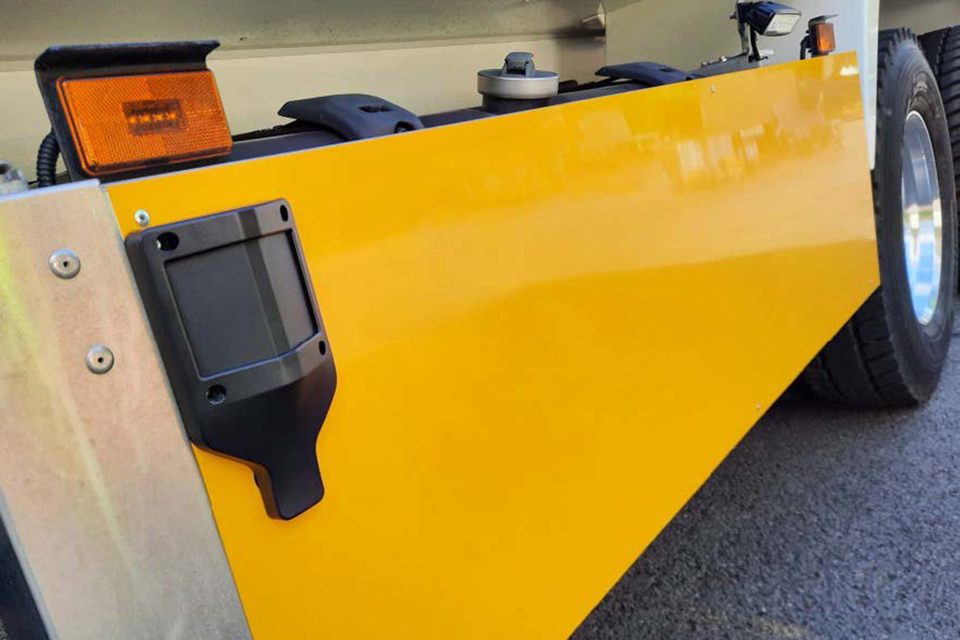
This would not be acceptable because the device is fitted to the panel where the rail is behind it.
